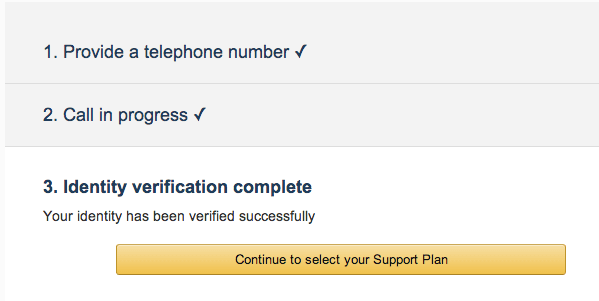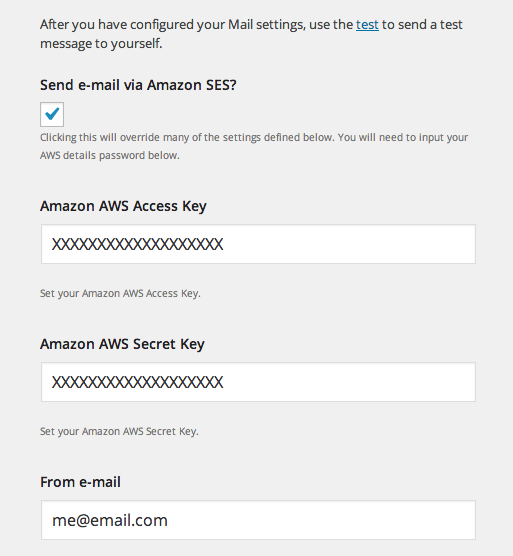Amazon SES

Ever wondered why do you need an email service? There are plenty of other email service providers that send many emails daily, and most of them are automatic mailing systems. Emails are used for customer support and engagement. Apart from this, they are the most professional ways of delivering potential clients information about your products and services. Huge firms rely solely on these services that automate their business process and increase the efficiency of the workflow rather than having to hire a person who does the same job. There are various limitations to this. Consider you are using Gmail for hosting and sending emails to your regular clients or any customer. However, there always exist some limitations with Gmail. The limitation can be mass-mailing restrictions, and trusted sources failed verification, etc. This is where Amazon SES comes to the rescue.
Amazon SES is designed to serve this kind of task where limitations are a big issue. It effectively manages all the blueprints of your email and is usually more reliable than its competitors. It is easier to navigate and control. It works just like a touch of magic that is cost-effective, detects malicious emails, and helps your emails avoid SPAM folders.
In this tutorial, you will learn about Amazon’s Simple Email Service (SES) and understand how it works, its workflows, and its areas of utilization. We would be discussing some important aspects and dependencies and escalate through pricing and its configurations. Let’s learn more about it.
Pricing
Whenever you try to sign in to Amazon, you might have seen that their free tier is only for twelve months. This free tier for twelve months gives you access to all the features with some fair limitations in services compared to premium. For instance, SES can only deliver 2000 messages if you chose EC2 hosting for your services.
Another instance is that if you don’t choose the free trial, it would cost you $0.10 per message. Amazon considers one message per recipient. It means if you send a message to 1000 email addresses, it will cost you around 10 dollars cents.
The next flow is the mail attachment. If your message contains any attachments you want to send to your clients, it would cost you $0.12 per GB. Thus, to effectively use SES, two popular ways are recommended to gain value for your price. Those two ways are:
- Simple Mail Transfer Protocol (SMTP).
- The SDK API.
Both of them work differently. To be precise, the SMTP allows you to link to the email server directly. On the other hand, the SDK API allows you to deliver emails by using the SES service by Amazon.
SES Account Setup
Before moving ahead with Amazon SES, you’ll need to create an account at SES. This will direct you to the other simple steps and make your account ready to send emails using the console window of SES.
Sign up for AWS
You need to first sign up with Amazon Web Services (AWS) and create an account in this step. It will ask for your credit card. Even if your plan is free, you will be required to have a credit card to sign up. To sign up, you can use the URL https://aws.amazon.com/ses. Just follow the instructions present on the screen and complete the mandatory identification steps. After the verification process, you shall be able to access all the services of Amazon.

Email address verification
It doesn’t matter to AWS if you are using the service in your production or sandbox. It will always ask the “From” address. You can find more information from the documentation provided on their official website.
Production Access Request
Once you receive and get verified from your email address, you can now request production access. Along with that, the bars of the emails that you send per day will also be raised to a higher number. It means that now you don’t need to worry about sending emails to unknown, unverified email addresses. Considering that you are a beginner to SES, first, play with it in the sandbox provided before using and deploying this service into your real business processes.

Using third-party plugins
While Amazon does not provide any official plugin in the SES product, hundreds of third-party plugins like WordPress can easily be used for this purpose. To get familiar with integrating these third-party plugins, you will be using Amazon SES DKIM Mailer. It is an amazing plugin that is compatible with different services as compared to Amazon SES. This means that if you want to remain hooked to the Amazon SES, you are not required to change the website. Rather, you need to change the connection details.
This plugin is powered by DomainKeys Identified Mail (DKIM) support. DKIM is channeled to outlast Reputation. If you sign in with your email, you can prevent all the important emails from heading toward the junk folder.
Installing the plugin
Considering that you are using WordPress plugin documentation, the following steps will help you install the plugin.
- Deactivate the previous email plugin so that no conflict can occur.
- Unzip the plugin by moving inside through the path of /wp-content/plugins/directory or unzip it through the in-build installer.
- Activate the plugin with the help of the WordPress admin menu on the console.
- Move to set to deactivate the link and then go to Settings > Mail Setting link.
- Please move to the plugin admin settings page, where you can customize it based on your situation.
Since you are already aware that Amazon SES provides a real-world environment, you need to move your path to Production Access. Without Production Access, you will not be allowed to send emails to the desired email address and can’t control it.
DKIM Utility
To take total advantage of DKIM, you need a public and a private key. It can be easily generated using DKIM, and the next step is to keep a record of these keys and upload the private key to the server. Next, you have to name it and place it at the root of the website with the permission of ports 400 or 440.
For the users having a Windows system, tons of key generators can be found online. For Linux or Mac, you are generating your own DKIM keys by using the terminal command “change -me” as a password.
Ensuring Configuration
To ensure that the plugin you integrated with AWS SES is working fine, the following images show the settings that need to be checked.

In the above image, you need to ensure that the “From” address should be validated earlier. Now you can easily integrate and use the plugin to send a text message. Once the message is successfully received, you are ready to move it the production.
To understand how to send a file to the client, you need to implement SES Client Factory. There are dozen different settings available that are hardly used since you will need only a key and a secret region. You can find out the key in the IAM Management Console. Then Region should always be the same where you earlier used SES.
With this setup, you will now have a client and a region, and you are good to go. You can easily use the client to call send emails. The send email method is designed to take only a single parameter like that of an array. This array needs to have some data contained in it. It could be the source that is required to validate the delivery from your account.
Once this is done, you need to put the emails you think are useful for you and add the content. After adding the content, you are required to run a script, and you will be able to send your first email successfully.
Conclusion
Amazon SES is a great tool for reducing your overall maintenance of the email service. It is quite cost-effective since you only have to pay for what you use. There are no absolute charges, and for the premium access, you will be charged reasonably. It also offers 12 month free trials for its first users so that they get engaged and understand how it works, and then as per business requirements, you can expect to use the additional services with less cost than its competitors. Apart from cost-effectiveness, SES is backed by Amazon Web Services, allowing you to integrate third-party plugins so that you don’t have to rely only on Amazon. It means that based on your requirements, you can use the simpler email service, which is auto-scalable, durable, and costs reasonably lower.
